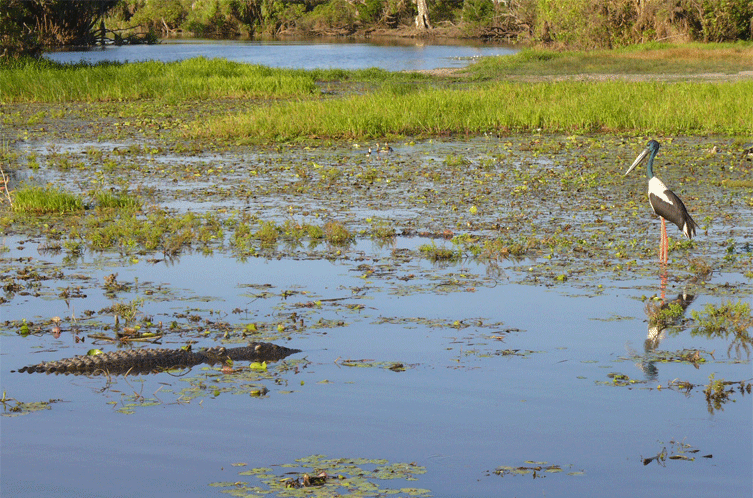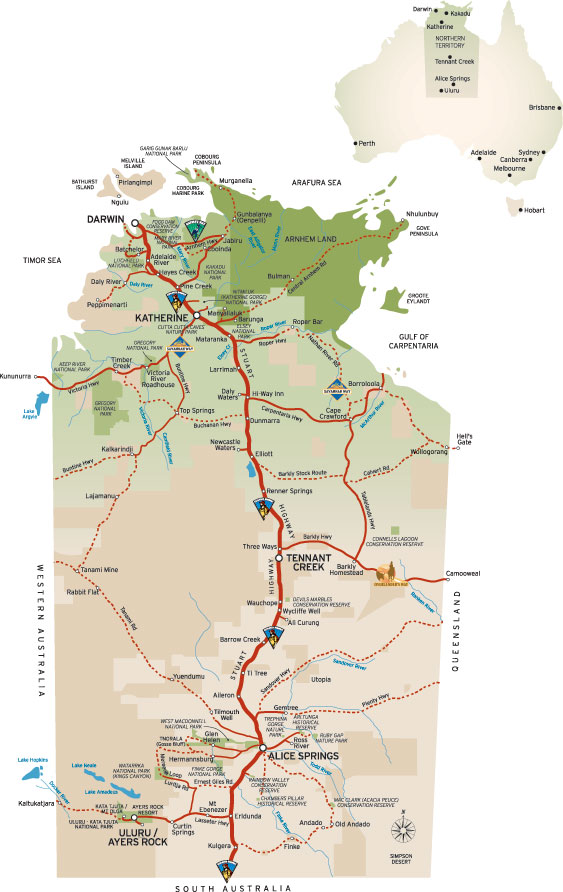| |
| Wildlife on the Stuart Highway from Darwin to Alice Springs |
|
National Parks & Wildlife The Northern Territory is a treasure trove of natural wonders. There are 52 national parks, reserves and nature conservation areas across the Territory designed to protect a wide variety of ecosystems and the plants and animals that live in these diverse habitats. The natural areas of the NT are the perfect place to see rare species of plants and animals in their natural habitats. Birdwatchers can check off a lengthy list of species around the hundreds of walking trails, camping areas and swimming holes. The rivers and billabongs of the tropical Top End teem with the most famous of the Territory’s wild animals: the saltwater crocodile. These fearsome predators can be seen in the wild on numerous croc-spotting cruises, or viewed up close and personal at many wildlife parks and venues around Darwin that are devoted to the study of these iconic reptiles. The savannahs and woodlands of the Katherine and Tennant creek regions offer an unrivalled diversity of ecosystems and landscapes, from majestic escarpments to lush forests to deep and mysterious river gorges sculpted by nature over millions of years. The deserts of the Red Centre appear stark and unforgiving at first; until a bit of closer study reveals an amazing and complex web of tenacious life creating one of the most unique ecosystems anywhere on the planet. The Northern Territory is unmatched in all of Australia for the variety of habitats, wildlife and spectacular landscapes. To help plan a nature holiday to the Northern Territory, consult the following list of just some of the parks, reserves and nature attractions from the tropical Top End down to the heart of the Red Centre. Darwin Region Other sites of note in the Darwin region:
Litchfield National Park — Located about 100 kilometres south of Darwin, the park is accessible year-round via sealed roads from Batchelor. The park features stunning landscapes of waterfalls and woodlands dominated by Wollybutt (Eucalyptus miniata) and Stringybark (Eucalyptus tetrodonta) trees as well as a variety of other woodland flora. Animal life common to the park include Wallaroos, Wallabies, Sugar Gliders, Black and Red Flying Foxes, a colony of very rare Orange Horseshoe Bats, hundreds of native bird species and, of course, the Dingo. Litchfield offers camping, fishing, swimming, bushwalking trails and four-wheel drive tracks during the dry season. The park also offers an Environmental Education Campground programme for young people. Butterfly Gorge Nature Park — Located about 200 kilometres south of Darwin, this site is famous for the millions of butterflies that nest in crevices in the sheer rock faces of the gorge.
Katherine Region Other sites of note in the Katherine region: Cutta Cutta Caves Nature Park — Located 30 kilometres south of Katherine, the park protects 1,500 hectares of rare Karst limestone formations. This landform type is chracterised by complex cave networks and tower-like masses of Tindal limestone supporting massive boulders. The caves provide a habitat for a variety of rare wildlife, including two species of extremely rare cave-dwelling bats: the Ghost Bat (Parisia unguis) and the Orange Horseshoe Bat (Parisia gracilis). Birdwatchers have recorded over 170 species in the park, including the hooded parrot (Psephotus dissimilis), and the highly endangered Gouldian finch (Erythrura gouldiae).
Tennant Creek/Barkly Region The ecology of the Tennant Creek/Barkly region completes the transition from the wet northern tropics to the arid Red Centre of central Australia. The environment is characterised by the Barkly tablelands, a huge expanse of scrub and grasslands that support some of the largest cattle stations in the world. The region is known for its rich legacy of historic sites. Sites of interest in the Tennant Creek region: Connells Lagoon Conservation Reserve — This reserve is located in the heart of the Barkly tablelands about 600 kilometres northeast of Tennant creek. The preserve was established to protect the interlocking flora and fauna of the native Mitchell Grassland ecology. A surprisingly rich diversity of 189 plant species, nine mammal, 19 reptile and 53 birds species are recorded within the reserve. Iytwelepenty/Davenport Ranges National Park — The Davenport Ranges are the nubs of extremely ancient mountains and hold a serene and quiet beauty that make the area an attractive destination for travellers. The park encompasses 1,120 square kilometres of the heart of the Davenport Range country and is an ecologically important refuge for native fauna. Karlu Karlu/Devils Marbles Conservation Reserve — Located about 220 kilometres south of Tennant Creek, Devils Marbles is a place of breathtaking beauty and so-named for the huge piles of granite boulders that dot the landscape. The formations are known as Karlu Karlu in all four of the local Aboriginal languages. The reserve covers 1,800 hectares and is easily accessible from the Stuart Highway.
Alice Springs Region Though it looks like a big empty place on the map, the Alice Springs region at the heart of Australia’s Red Centre is packed full of nature attractions. There are 24 national parks, nature reserves, conservation areas and historical sites dotted across this vast area, from the iconic Uluru/Ayers Rock in Ulura-Kata Tjuta National Park in the west to the Mac Clark Acacia Peuce Conservation Reserve in the east, where the rarest species of tree in Australia is protected and studied. Sites of Interest in the Alice Springs region: Alice Springs Desert Park — Located in Alice Springs, this park allows visitors to examine a wide array of the flora and fauna of the vast desert lands of central Australia and learn about the complex ecology of the region. The park features displays, presentations and recreated desert habitats showcasing rare and endangered animals. The park also offers a fascinating cinematic presentation outlining the four-and-a-half billion year geological evolution of the Red Centre. West MacDonnell National Park — Located to the west of Alice Springs, the park comprises a vast section of the MacDonnell Ranges. The landscape is an amazing example of landform evolution over geological time, consisting of scenic escarpments, hidden gorges and waterholes harbouring relict populations of plants and animals that have survived from a time when central Australia was covered in tropical forests. Finke Gorge National Park — Located about 138 kilometres southwest of Alice Springs, Finke Gorge covers an area of 46,000 hectares of Red Centre bushlands. The park preserves a diverse range of rare plant species unique to the central Australian deserts, including the Red Cabbage Palm for which the Palm Valley site within the park is named. This species of palm is found only here, and the park protects a population of nearly 3,000 of these extremely rare plants. The park is accessible year round, and popular for walking trails, camping and four-wheel tracks. The Parks Alive Programme offers free Ranger guided activities from May through September. Courtesy of Northern territory Tourism Council List of native animals in NT • What Native mammals can be seen or found in Northern Territory Australia • What Native birds can be seen or found in Northern Territory Australia • What Native repitles can be seen or found in Northern Territory Australia • What Native frogs can be seen or found in Northern Territory Australia |
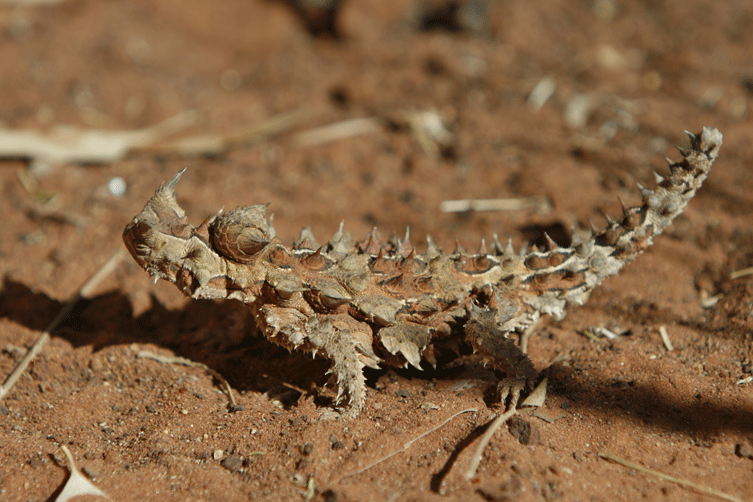 |
| The fantastic Thorny Devil in the Macdonnell Ranges |
Thinking of a family self drive hire vacation -
then search here for a one way rental
|
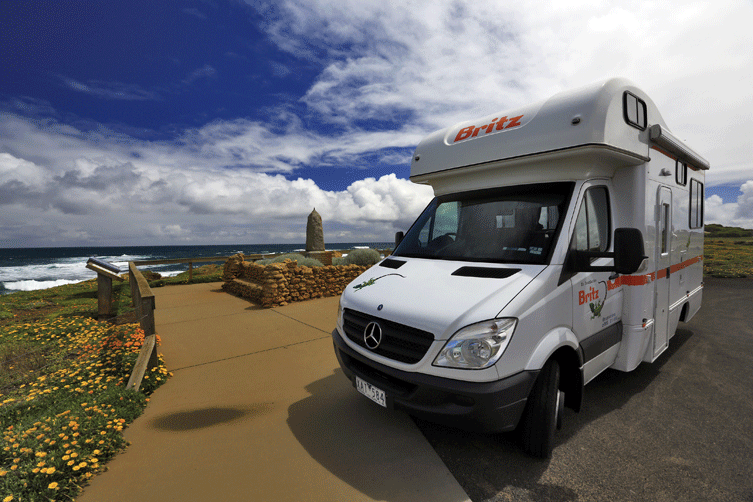 |
Darwin to Alice Springs on the Stuart Highway travel information for self drive visitors guide. 1500 klm a jouney to remember and you have never really known Australian until you visit both Uluru (Ayers Rock), Katherine Gorge (Nitmiluk) and Kakadu.
- Travel from Darwin to Litchfield National Park back track to the Arnhem Highway onto Jabiru and then down the Kakadu Highway onto Pine Creek then Katherine and straight through another approximate 1200klm to Alice Springs stopping at Katherine and Katherine Gorge, Tennant Creek, Devils Marbles and the many road houses, wayside inns, hotels and fuel stops along the way and really enjoy true outback hospitality and the flavour of our territory. Option 2 do the reverse from Alice Springs to Darwin and which is better the choice is yours.
-
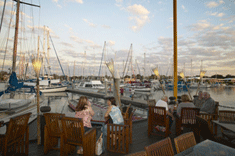
• Tropical Darwin capital cityOnce a sleepy outback town now a small city now a thriving industrial and tourism hub. Darwin city sits on a peninsula, next the outer city of Palmerston 30klm away and outer Darwin small farm lots of 5 acres to 320 acres agricultural lands.
Darwin Australia -
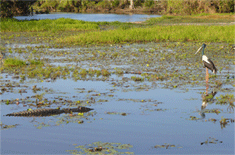
• Kakadu National ParkVisit Kakadu National Park, Northern Territory, Australia. 2 different access sealed highways into Kakadu it's a desintaion for tourists on vacation seeking a 5 day experience. Visit pristine waters, wildlife cruises and ancient Aboriginal rock art.
Kakadu National Park -
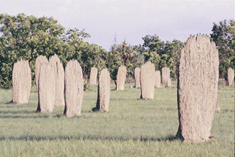
• Litchfield National ParkVisit Litchfield National Park, Northern Territory, Australia. Visit nearby Litchfield National Park and see stunning waterfalls and amazing termite mounds – and swim safely in crystal-clear swimming holes such as Buley Rock Holes and Lower Cascades.
Litchfield National Park
-
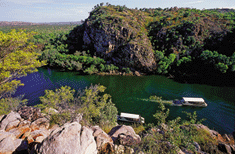
Katherine Gorge NitmilukVisit Katherine Gorge in Nitmiluk National Park,Northern Territory, Australia. The most comfortable months to visit the Park are from May to September. The wet season causes flooding of the Katherine River and restrictions on some of the activities available.
Katherine Gorge -
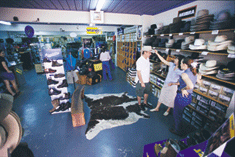 Katherine south of Darwin
Katherine south of DarwinVisit Katherine in Northern Territory, Australia! With a population of over 9,804 people Katherine is a modern thriving regional center and excellent town to setup your camp at with it's caravan parks in the town and at Katherine Gorge in Nitmiluk National Park.
Katherine -
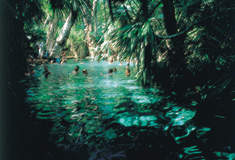 Mataranka Thermal Springs
Mataranka Thermal SpringsVisit Mataranka township and just off Stuart Highway in Elsey National Park.the famous Mataranka Thermal Springs is fed by spring water from the Daly and Georgina basins ata volume of 30.5 million litres per day. Surrounded by a palm forest 34C degrees.
Mataranka Thermal Springs
-
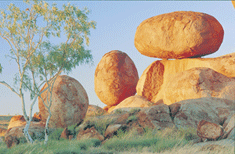 The Devils Marbles
The Devils MarblesKarlu Karlu known Devils Marbles. The Karlu Karlu Conservation Reserve, stretches 1,802 hectares and is home to a wide variety of desert flora and fauna, including goannas and finches. Located just approximately 100 kilometers south of Tennant Creek.
Devils Marbles -
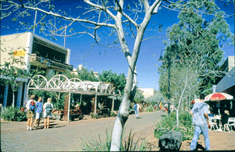 Town of Alice Springs
Town of Alice SpringsAlice Springs known just as Alice has both western and Aboriginal influences. The town's central Todd Mall has numerous Aboriginal art galleries. Alice Springs desert lifestyle has several unique events such as the Camel Cup and Henley-on-Todd Regatta.
Alice Springs -
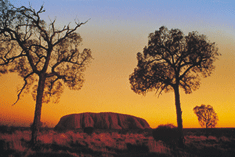 Uluru Kata Tjuta Park
Uluru Kata Tjuta ParkUluru wasn't always known as Uluru actually it was named Ayers Rock and the same for Kata Tjuta was The Olgas. Uluru Kata Tjuta National Park though around 6 hours comfortable 2wd drive from Alice Springs is 452km away southwest of the town.
Uluru Kata Tjuta National Park
